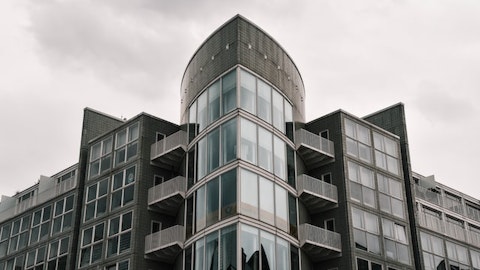Camille Bonnel: Christina, you spoke about a number of factors impacting the positive same-store NOI growth for the quarter. Just wondering if you could provide a bit more context behind the moving pieces and trying to get a sense of whether one or another may have played a bigger factor here?
Christina Chiu: Sure. So the key drivers are higher cash rental revenue. And as a reminder, we have long put out a schedule sign lease not commence and free rents. And as the free rent burns off, that does contribute to our same-store cash NOI that was a primary and large factor. The second item as we called out was the timing of tenant reimbursements of some work. So over the course of the year that would be a net wash pretty much however between quarters that could lead to a little more bumpiness in the same-store results. So that was another contributor. But free rent I think is something to look out for, which is why we continue to provide the disclosure of how much contractual rental revenues on the come.
Camille Bonnel: And another core factor in your same-store guidance is that expectation of higher operating expense from tenants utilizing your buildings more. Could you just talk to how that’s been tracking against your projections for the year?
Christina Chiu: Sure. We continued to trend up in operating expense. But as I mentioned in our remarks, it was really due to the team doing a fantastic job, being very proactive and reducing expenses amidst low building utilization levels. So what we’re seeing now is a normalization which we called out beginning last year and continues into this year. That said, even with this increase, we’ve also mentioned we expect property operating expenses to still be about 5% below 2019 levels due to some permanent expense savings. So what we’re seeing is sort of a normalization, and that will continue through the end of the year consistent with our same-store NOI guidance range.
Camille Bonnel: Thank you.
Christina Chiu: Thank you.
Operator: Thank you. Our next questions come from the line of Blaine Heck with Wells Fargo. Please proceed with your questions.
Blaine Heck: Okay, thanks. Good afternoon. Just wanted to dig into occupancy guidance a little bit more as you guys are at the upper end of the range. And I think you’ve got about 325,000 square feet of signed leases that haven’t commenced, but the guidance range for occupancy implies a decrease in the second half. I know you lay out some of the known vacates on page 10, but given the leasing pipeline, I’m still a little surprised occupancy guidance wasn’t increased. Can you give us some more color on that and whether it’s just the timing issue or anything else?
Tom Durels: Yes, Blaine. This is Tom. Look, we remain confident that we’ll achieve our guidance of 85% to 87% for the portfolio and about a 100 basis points higher for New York City office. That said, we might trend towards the mid to higher part of that. The – if you look at our expirations, we only have about 319,000 square feet of leases that expire through the balance of this year. And about 191,000 square feet of uncovered vacates that are known. This would be partially offset by over 140,000 square feet of leases on vacant space. That should commence by year end, plus any additional leasing that we do that commences this year. So it’s really timing of tenant vacates and when those new leases commence.
Blaine Heck: Okay, great. That’s really helpful Tom. And then sticking with you or Tony wants to jump in. We’re hearing that some landlords are less willing to spend on TIs based on their higher cost of capital. So I guess how does that play out with respect to free rent increasing or even lower face rental rates? And how do you think you all can differentiate yourselves with a great balance sheet to compete with tenants or for tenants in this environment?
Tom Durels: Well, first you look our TI – average TI cost decreased this quarter from last quarter. And it’s only slightly above our five-year average of about $62 per square foot. And of course, if you look at the lease metrics, our lease cost per year of term is in line with our five-year average and is actually below this quarter from the trailing 12-month average. That said, we have invested heavily into our tenant spaces. We have a lot of pre-built space that we’ve previously incurred the cost, and of course then our balance sheet allows us to compete for – really for any deal. And that’s how we look at it.
Tony Malkin: Yes. And we haven’t enlarged our free rent and frankly, look, tenants and brokers, sorry, Tony here, tenants and brokers look very carefully at landlord sponsorship quality. And there are not a lot of shortsighted people out there. We began to talk about this with brokers about 12 months ago, 18 months ago, and now it’s on the tip of every broker’s tongue. Will they get paid? Will their tenants TIs be funded? Will the tenants have prolonged quiet enjoyment of their spaces with a quality landlord? And all of that [indiscernible] benefit.
Blaine Heck: Very helpful. Thanks guys.
Operator: Thank you. Our next questions come from the line of Dylan Burzinski with Green Street. Please proceed with your questions.
Dylan Burzinski: Hi guys. Thanks for taking the question. Just curious, obviously, there’s been a large scale return to all this announcements across various sectors. Are you seeing anything with regards to changes to how tenants are thinking about building out their space as a result?
Tom Durels: Not really in terms of how they design their space. Some of the programming of space that begin to develop even pre COVID is still relevant today. I think that we see is tenants run, every tenant has their own – developing their own approach and policies to their work from office. But generally the themes remain the same and it’s constant throughout, which is tenants and companies recognize the importance of people being together for collaboration and training and creativity and really the importance of having an office to run their business effectively.
Tony Malkin: Yes, and I guess the only thing that I would say Dylan that stands out is these castle numbers are all screwy. Midtown Manhattan is probably the number one recovery in office in the United States. New York City is a fantastic market. Our business is strong. People are on the streets. We had to dodge people yesterday as we headed over to look at some new corridors [ph] at the Empire State Building around 530, 545 as people were, we basically were salmon swimming upstream going across 33rd street. The observatory is packed. We’ve extended hours as anyone can see from our online ticket sales for our reservations. So yes, we feel quite good about where we are and with regard to the use of space
Dylan Burzinski: And then just one on cash releasing spreads, year-to-date results are significantly better than call it the last three years through the pandemic. Just curious, on a go forward basis, I mean, do we expect this momentum to continue on that front? And I realize in any given quarter, it’s going to depend on the lease, on which leases are rolling, where you’re signing leases, but just curious over a longer term time horizon. I mean, is low single digits fair?
Tony Malkin: Well, it will always depend on the mix of spaces that are leased. But for our Manhattan office leases, I expect positive spreads in the near term. Since the prior fully escalated rent on our vacant, Manhattan office space that we’re marketing is about $56 per square foot. And that compares to our starting rent for our recent Manhattan office leases around $66 a square foot. So I feel good about our ability to post positive spreads in the near term.
Dylan Burzinski: Thanks for the time.
Operator: Thank you. Our next questions come from the line of John Kim with BMO Capital Markets. Please proceed with your questions.




